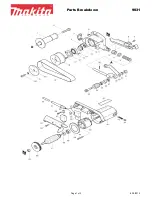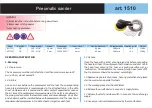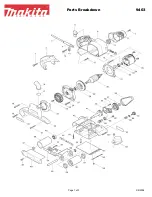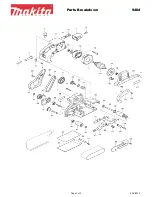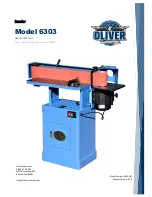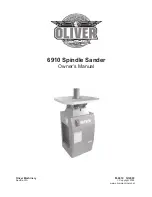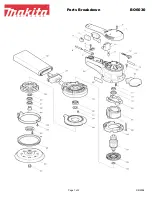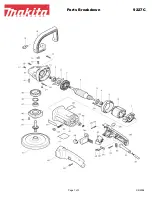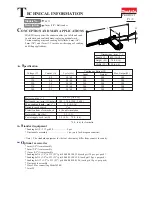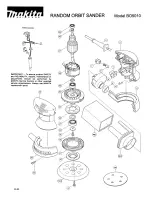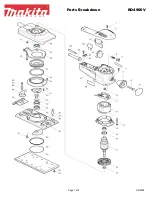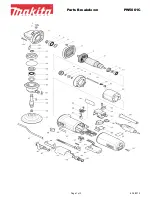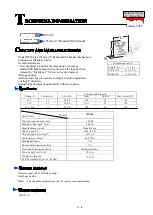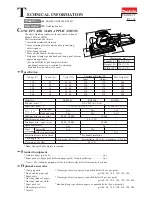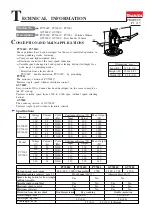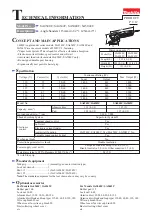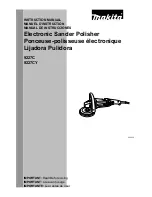
SET UP
Assembly and Transport
Installing Abrasive Disc
1.
Always carry the floor sander by the two handles
with the bag frame in the up position and the
power cable stowed around the bag frame.
Protect the sanding disc with an abrasive disc
and ensure that the clamp bolt is secure. Ensure
that the floor sander is secure and cannot move
when being transported in a vehicle. The floor
sander is heavy. Take care when lifting and
carrying the machine.
2.
To prepare the floor sander for use place the
machine on the floor and remove the cable from
the bag frame. Check that the cable is in good
condition and that all fittings are secure.
3.
Lower the dust bag support frame and fit a paper
dust bag following the instructions printed on the
bag. Do not reuse or use a non standard bag. If a
cloth type bag is used ensure that it is tied securely
around the dust outlet and that the bag is in good
condition with no holes.
4.
To dismantle the floor sander reverse procedure
2 to 3 above.
1.
Ensure the power cable is disconnected from the
power supply.
2.
Tip the floor sander upside down and rest the
machine on it's top and handles.
3.
Remove the Wrench Ref.61 from the clips inside
the skirt of the floor sander situated in between
the castors and remove the Bolt Clamp Ref.59
and Washer Clamp Ref.58 from the center of the
sanding disc.
4.
Select a suitable grade of abrasive disc (see
Abrasive Paper Guide on page 5).
5.
Place the bolt clamp through the center of the
washer clamp and abrasive disc and carefully
thread the bolt into the sanding disc.
6.
Using the wrench, tighten the bolt clamp
ensuring that the abrasive disc is centered and
the washer clamp is properly located. The bolt
should be secure but do not try to over tighten.
Heavy grit abrasive discs will seat down as you
tighten the bolt so take care to ensure the washer
CAUTION - never fit more than one
abrasive disc . If more than one abrasive
disc is fitted the setup of the sander will
be affected and the clamp bolt and
washer and sanding pad will be
damaged.
clamp is properly located. Heavy grit abrasive
discs may not lie flat on the sanding disc, this is
quite normal and the abrasive disc will flatten
immediately upon operation.
7.
Do not use damaged or incorrectly sized
abrasive discs under any circumstance, damage
will result to the machine and floor.
1.
Where possible remove all furniture from the
area or room. The Pacific Wolverine PF7 Edger
Sander features an efficient dust pickup, however,
some dust will escape. Protect all vulnerable
furnishings with dust sheets.
2.
Remove all tacks, staples and other unwanted
fixings from the floor. Failure to do so will result
in damage to the abrasive disc and sanding disc.
3.
Punch all nails below the surface of the floor
using a suitable nail punch and hammer. Any
screws used to fix boards should be counter sunk
below the surface. During sanding, any nails or
screws that become exposed must be punched or
counter sunk further.
4.
Firmly fix all loose boards or blocks.
5.
Remove heavy wax, grease and dirt deposits by
hand.
6.
Sweep and vacuum the floor thoroughly to
remove dirt and discarded fixings.
7.
Ensure good ventilation by opening windows.
8.
If sanding a work bench or similar work piece
follow the instructions above to prepare it ready
for sanding. Make sure that the work piece is
secure. Never use the floor sander above waist
height.
Note: Use Pacific Floor Care genuine floor sander
abrasives for the best sanding performance and
finish.
1.
Move the floor sander to the location of your
work.
2.
Make sure the switch is in the OFF (O) position
then connect the power cable to a suitable power
supply ideally located behind or to one side of
the machine and work area.
3.
Wear a dust mask and ear defenders.
4.
Kneel behind the machine on one knee (use knee
pads to protect knees) and hold both handles
with the power cable held in the right hand in a
small loop and then pass the cable over the right
PREPARATION
OPERATION
2



















